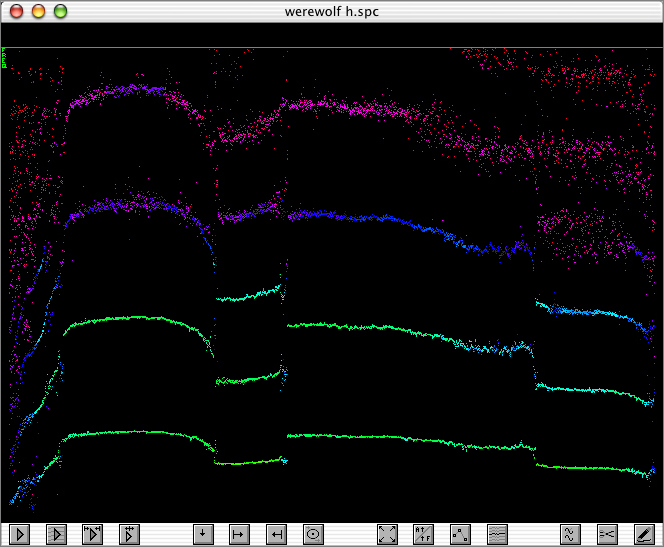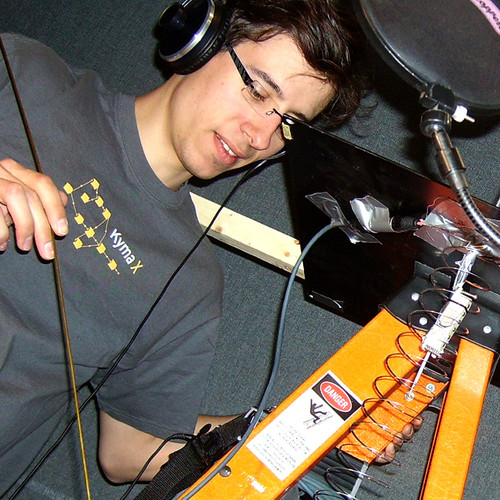
Ready to be transmogrified at the micro-cellular-level? Premised on the proposition “that we are what we hear,” Cristian Vogel’s new album Polyphonic Beings seeks to expose each of our cells to musical qualities that will effect the deepest possible transformations.
Cristian once again employs Kyma to achieve his signature far-afield timbral explorations, surprising tricky silences, and trance-inducing slow timbre morphs. Eminently danceable, Polyphonic Beings transports you through the imaginary landscapes depicted in the cover art and deposits you safely in the serenely peaceful state evoked by the Society of Hands.
- Exclusion Waves: The pilgrimage begins with pink noise waves breaking gently onto an indigo shore, with vocal-chants enfolded in the noise.
- Mccaw’s ghost:Â Slow and easy, runs out of steam punk at the end
- How many grapes went into that wine: Here, Vogel is in his element: pitchy cross-synth rhythms and his signature metric modulations paired with crazy pitch unwindings! Trance-inducing vocalesque timbres ride rhythmic spirals and a sudden break leaves you catching your breath to a humorous chorus of squeegee “la-la-las” that morph into synths.
- Lost in the chase: Lovely liquidy sounds like hitting an open-mouth tube (or modal filters?) establish an ostinato pattern that change every 8 bars until a gorgeous smooth disintegration into gentle noise & silence.  But wait, there’s more!  An over-the-top metallic plate reverb with metallic hits finishes out the track.
- La Banshee 109: (or is it LA Banshee?) Sounds of metal rigging wiggling in a stiff breeze and trying hard to settle into a groove. It finally settles into a liquid pattern as reverse attack brass-like timbres create a heart beat pulse which evolves into conga-like plucky patterns with unstable frequency swoops.  Once again a lovely dissolve and disintegration.
- Forest Gifts: One thing about the forest is, it’s full of insects!  A delightful buzzy buggy intro blurs and then comes into focus as a fast groove of buzzy shakers with an overlay of creatures encoded into the northern lights and luxurious harmonic sweeps. Filtered noise, like distant boat horns, peacefully resolves into a misty forest dawn with delicate violin tremolo.
- Society of hands: Exquisite slow machine room gradually morphing into an icy wind rattling the vents, against slow delicate piano chords with reversals gradually working their way from high to low. Landing in a raspy Japanese vocal and peaceful filtery suspensions.  You’re left feeling serene and elevated.
Order online and then get your tickets for the 22 November launch party in Berlin. (with Vogel and SØS on the bill, prepare yourself for a transformative experience).


 Sound designer
Sound designer 
 SGR^CAVÂ is a collaboration between composers
SGR^CAVÂ is a collaboration between composers  In January 2014 the duo SGR^CAV released their debut recording
In January 2014 the duo SGR^CAV released their debut recording 